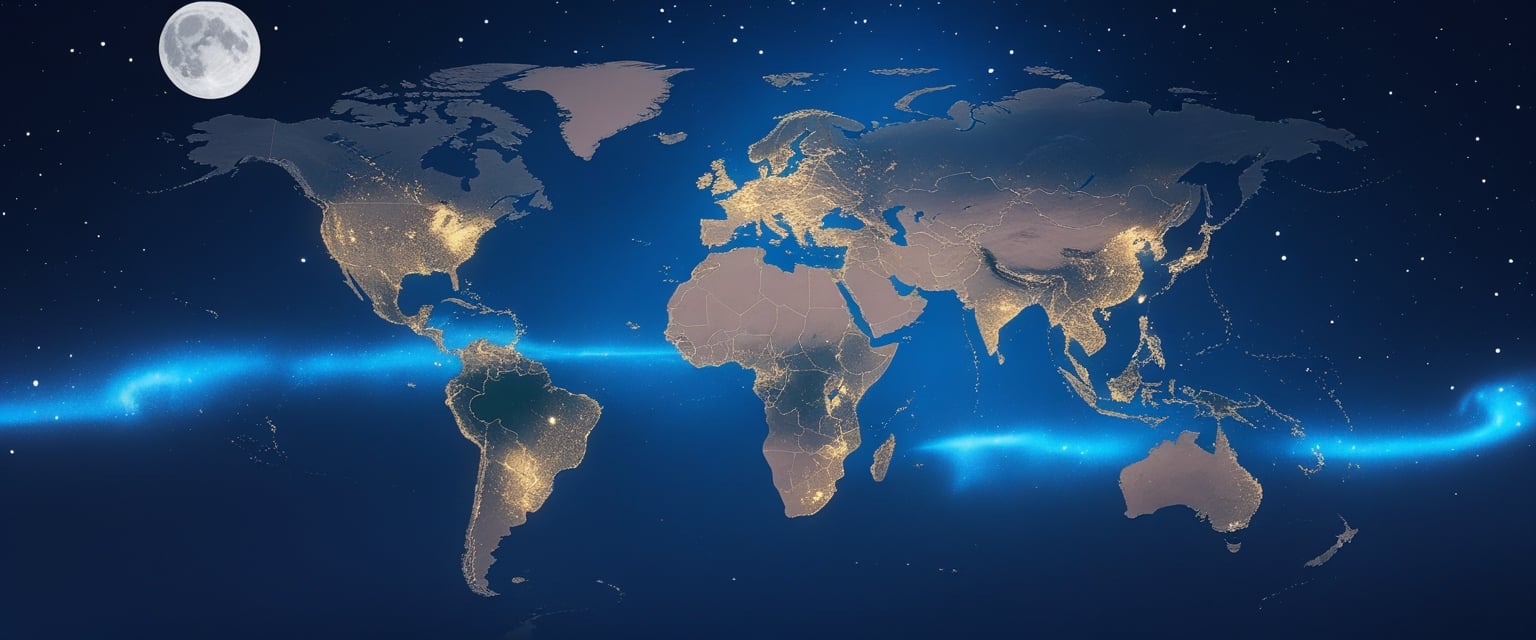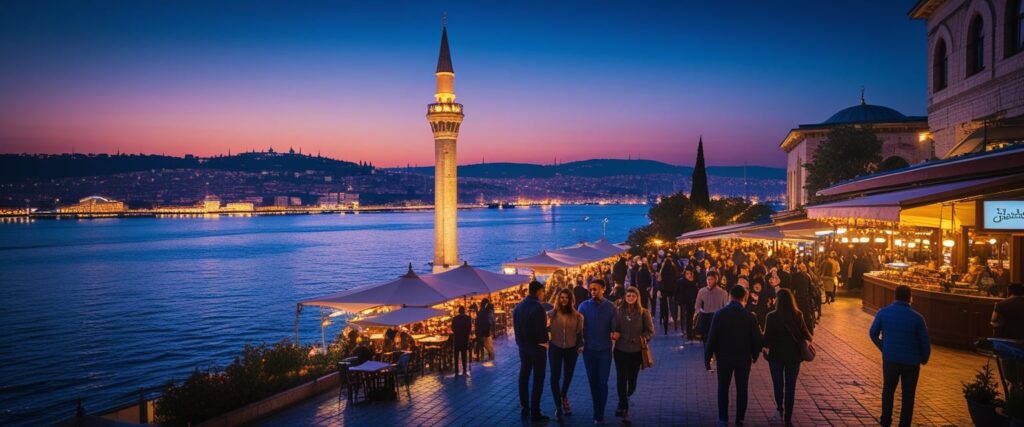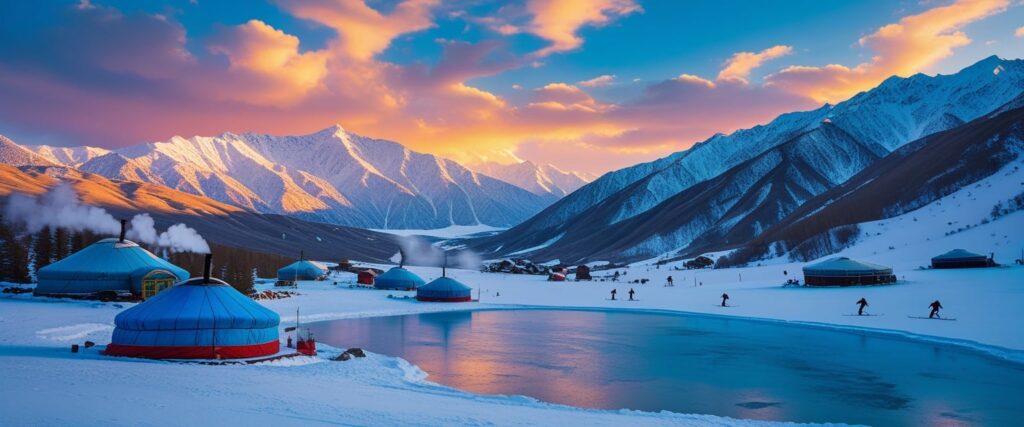10 Magical Noctourism Spots You Must Visit in 2025: Global Nighttime Wonders is a guide that reveals how travel after dark is transforming into one of the biggest trends of the year. These nighttime experiences allow travelers to see the world in ways that are impossible during the day. From glowing bays to lantern-lit villages, noctourism offers an enchanting mix of culture and nature.
This travel style is perfect for those who love cooler evenings, fewer crowds, and unique photo opportunities.
The guide to 10 Magical Noctourism Spots You Must Visit in 2025: Global Nighttime Wonders includes destinations across Asia, Europe, Africa, and the Americas. Each location has been chosen for its ability to deliver unforgettable nighttime experiences. From desert skies in Namibia to night markets in Bangkok, the world truly comes alive after sunset.
Exploring these 10 Magical Noctourism Spots You Must Visit in 2025: Global Nighttime Wonders ensures that your travels in 2025 will be extraordinary. Travel after dark is becoming one of the most exciting ways to experience the world in 2025. From glowing bays and desert skies to midnight markets and nocturnal safaris, destinations are offering unique adventures that can only be found at night. The best noctourism spots in 2025 let travelers connect with nature, culture, and the stars in ways that daylight cannot match.
This growing trend, often called noctourism, highlights stargazing in remote parks, bioluminescent waters, and cultural festivals that come alive after sunset. With the solar maximum making auroras especially vivid this year, places like Norway and Greenland are set to deliver unforgettable skies. At the same time, night safaris in Africa and lantern-lit villages in Europe show how diverse these after-dark experiences can be.
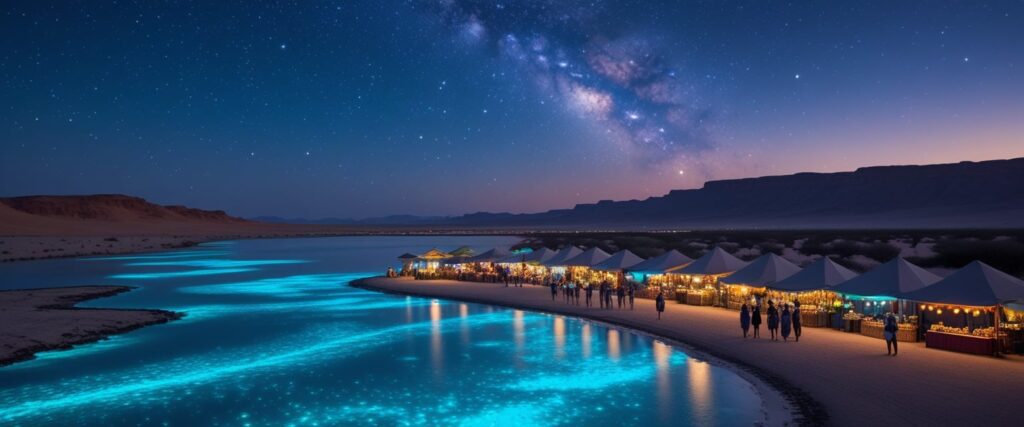
The following guide explores ten of the most magical noctourism destinations to visit in 2025, along with practical tips for planning and common questions about traveling at night. Each location offers a different way to slow down, look up, and experience the world when the lights fade.
Table of Contents
Top 10 Magical Noctourism Spots for 2025
Travelers in 2025 are embracing noctourism for its cooler temperatures, fewer crowds, and unique access to natural and cultural wonders. From illuminated temples in Asia to dark sky reserves in Africa and the Southern Hemisphere, these destinations reveal a different side of the world after sunset.
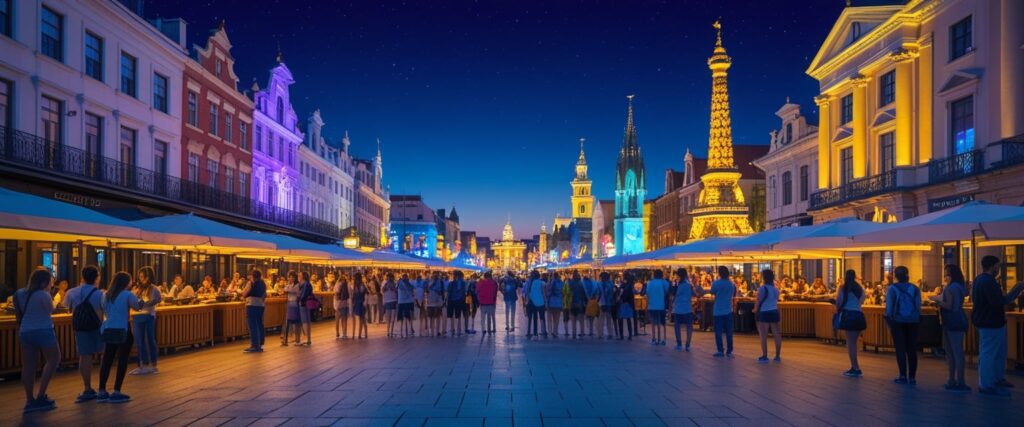
Kyoto’s Illuminated Temples and Night Strolls
Kyoto, Japan, is known for its historic temples and gardens, but at night many of these landmarks glow under seasonal light-ups. Temples such as Kiyomizu-dera and Kodaiji open for evening visits during spring and autumn, when cherry blossoms or fall leaves are lit against the night sky.
Walking along the Philosopher’s Path or through Gion’s lantern-lit alleys allows visitors to experience Kyoto without daytime crowds. Seasonal festivals often include illuminated pagodas, tea ceremonies, and cultural performances that highlight Japan’s traditions.
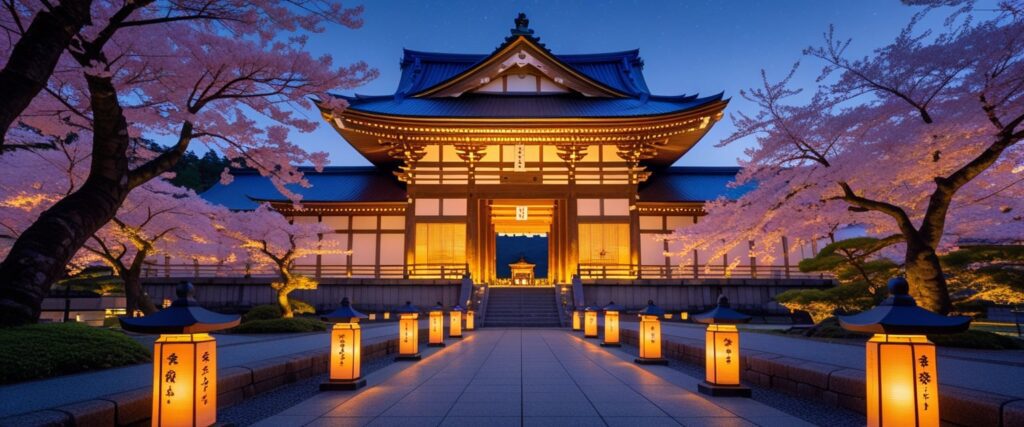
For travelers seeking a calm night experience, Kyoto’s temple light-ups offer a balance of cultural depth and quiet beauty.
Stargazing in the Atacama Desert, Chile
The Atacama Desert in Chile is one of the driest places on Earth, offering crystal-clear skies for stargazing. With little light pollution and high altitude, it is considered one of the best destinations for astronomy.
Visitors can join guided tours from San Pedro de Atacama, where astronomers use telescopes to point out constellations, nebulae, and even distant galaxies. The Milky Way is often visible without equipment, making it a favorite spot for stargazers.
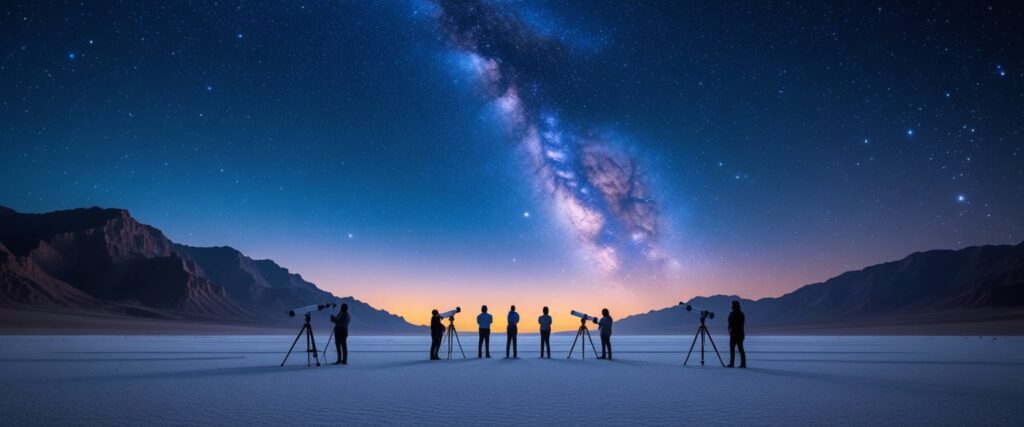
Several observatories welcome travelers, and night excursions are frequently adjusted to match weather conditions. The Atacama’s unique landscape of geysers and salt flats makes the night sky even more striking.
Aurora Adventures in Iceland’s Volcanic Landscapes
Iceland offers dramatic volcanic scenery combined with one of the world’s best views of the northern lights. From September to April, travelers can see the aurora borealis dance across skies above glaciers, lava fields, and geothermal springs.
Tours often leave from Reykjavik or Akureyri, with guides tracking weather and solar activity to increase chances of sightings. Popular viewing spots include Thingvellir National Park and the black sand beaches near Vik.
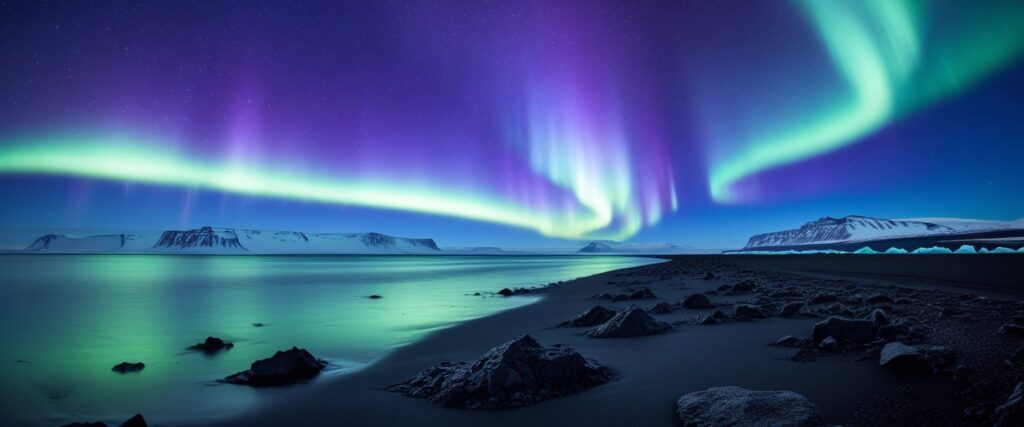
Some travelers combine aurora viewing with hot spring visits, such as the Blue Lagoon at night. The mix of volcanic landscapes and shifting lights makes Iceland a leading noctourism destination.
Singapore’s Night Safari and Garden Light Shows
Singapore is home to the world’s first Night Safari, where visitors explore open-air habitats after dark. The safari features over 900 animals, including tigers, leopards, and elephants, in carefully designed nighttime environments.
Nearby, Gardens by the Bay hosts the Garden Rhapsody light show, with towering Supertrees glowing in sync with music. Marina Bay Sands also offers evening light and water shows that draw large crowds.
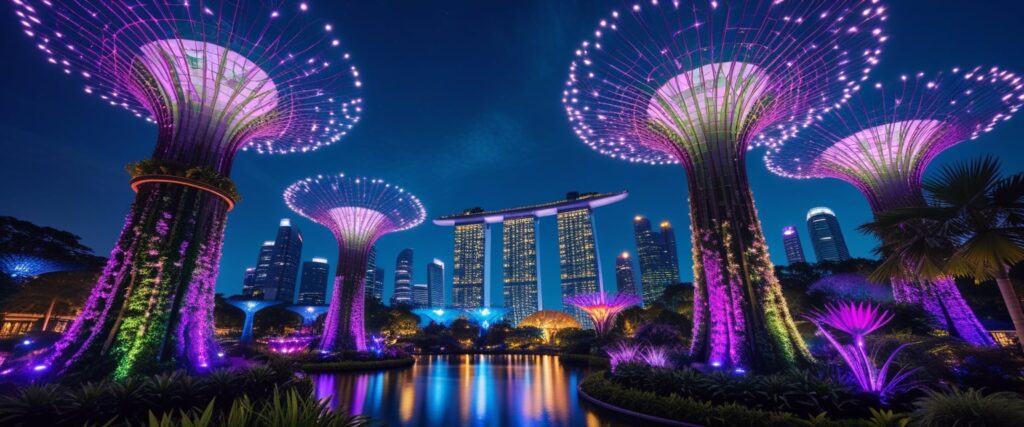
Singapore combines wildlife encounters with modern city attractions, making it a diverse option for night tourism. The city’s efficient transport system makes it easy to explore multiple nocturnal activities in one evening.
Dubai’s Desert Stargazing and Night Markets
Dubai’s desert offers wide horizons for stargazing, especially in areas far from city lights. Guided tours often include telescope sessions, Bedouin-style camps, and traditional meals under the stars.
Travelers can also enjoy Dubai’s vibrant night markets, where stalls sell regional food, textiles, and crafts. The Global Village, open in the evenings, features cultural performances and international pavilions.
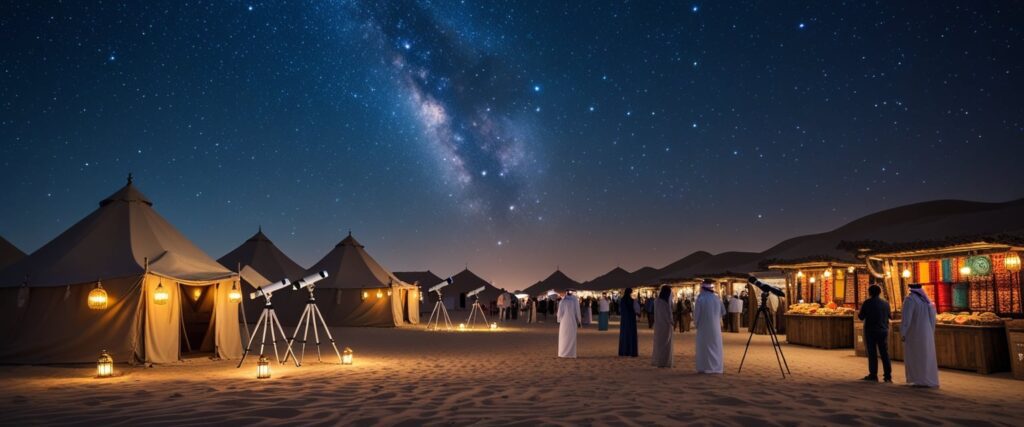
This combination of desert astronomy and urban night markets highlights Dubai’s mix of tradition and modern entertainment. The cooler nighttime temperatures make desert excursions more comfortable than daytime visits.
Namibia’s Dark Sky Reserves for Stargazers
Namibia is home to some of the darkest skies in the world, with several reserves recognized for stargazing. The NamibRand Nature Reserve is an official Dark Sky Reserve, offering clear views of the Milky Way and meteor showers.
Lodges often provide telescopes and guided astronomy sessions, allowing visitors to learn about southern hemisphere constellations. The desert setting ensures minimal light pollution, making it ideal for astrophotography.
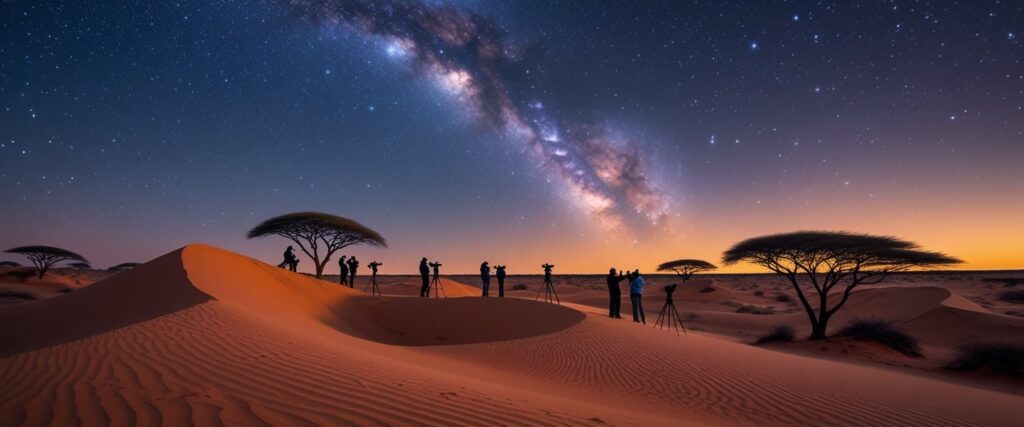
Night safaris are also available, where travelers may spot nocturnal animals like aardvarks and porcupines. Namibia’s combination of wildlife and astronomy makes it unique among noctourism destinations.
New Zealand’s Aoraki Mackenzie Dark Sky Reserve
New Zealand’s Aoraki Mackenzie Dark Sky Reserve offers some of the best stargazing in the Southern Hemisphere. Located on the South Island, it covers Mount Cook National Park and Lake Tekapo.
Visitors can join observatory tours or simply stargaze by the lake, where the sky often reveals the Magellanic Clouds and the Southern Cross. The reserve is also a prime location for viewing meteor showers.
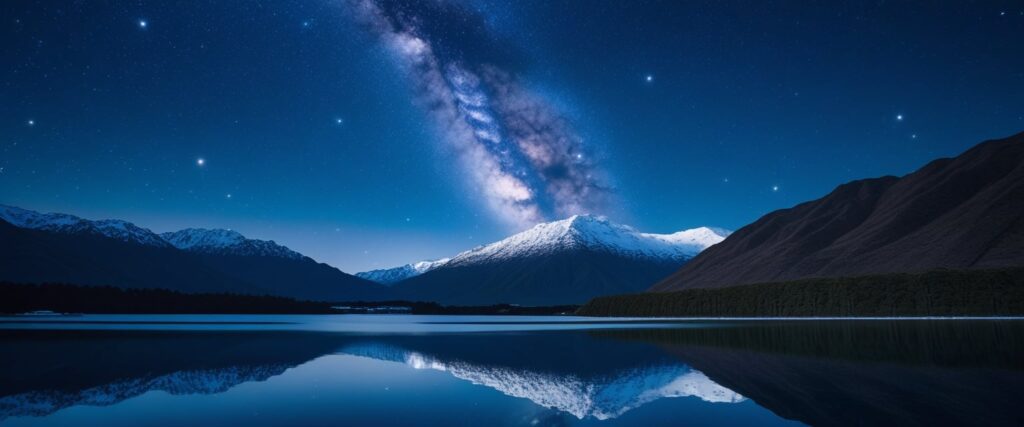
Local operators provide astrophotography workshops and guided night hikes. The combination of alpine landscapes and dark skies makes this reserve a top choice for stargazers.
Night Markets in Bangkok, Marrakech, and Taipei
Night markets are central to noctourism in cities like Bangkok, Marrakech, and Taipei. Each city offers a different cultural flavor through food, crafts, and performances.
In Bangkok, markets such as Chatuchak and Rot Fai feature street food, antiques, and fashion. Marrakech’s Jemaa el-Fnaa square comes alive with food stalls, snake charmers, and musicians. Taipei’s Shilin Night Market is famous for Taiwanese snacks like oyster omelets and bubble tea.
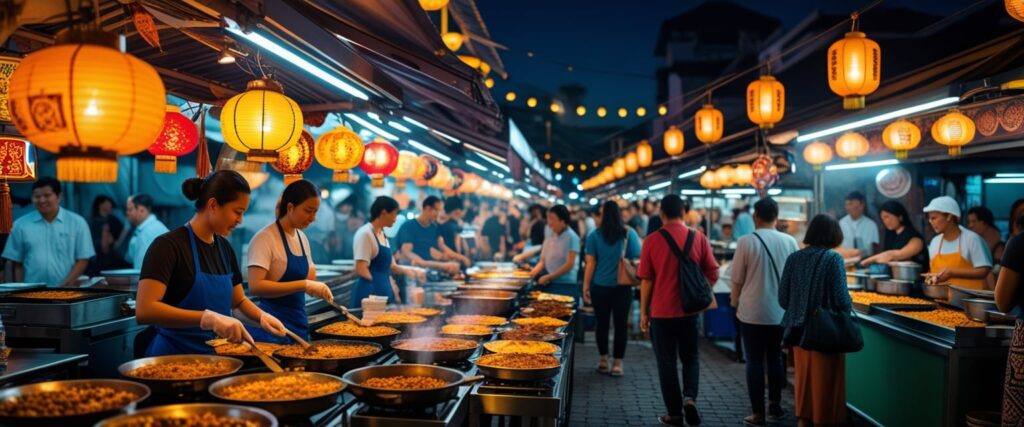
These markets allow travelers to experience local culture in a lively, social setting after dark. They also provide affordable dining options compared to daytime restaurants.
Bioluminescent Bays and Night Cruises in Puerto Rico
Puerto Rico is known for its glowing bioluminescent bays, where microorganisms light up the water when disturbed. Mosquito Bay on Vieques Island is considered the brightest in the world.
Night kayak and boat tours let travelers paddle through glowing waters, creating a rare natural spectacle. Fajardo and La Parguera also offer similar experiences, though on a smaller scale.
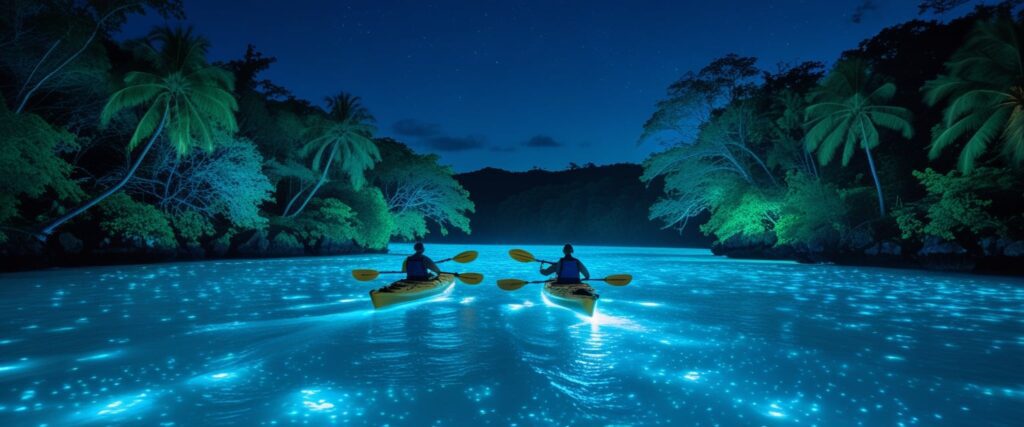
These bioluminescent tours are best during moonless nights, when the glow is strongest. Puerto Rico’s bays provide one of the most distinctive noctourism experiences available.
Midnight Museum Visits and Illuminated Landmarks in Rome and the Swiss Alps
Rome offers after-dark access to landmarks such as the Colosseum and the Vatican Museums. Evening tours allow visitors to explore without daytime crowds and see monuments lit against the night sky.
In the Swiss Alps, towns like Zermatt and St. Moritz host illuminated winter walks and night skiing. Mountain railways also run evening trips, offering views of snow-covered peaks under starlight.
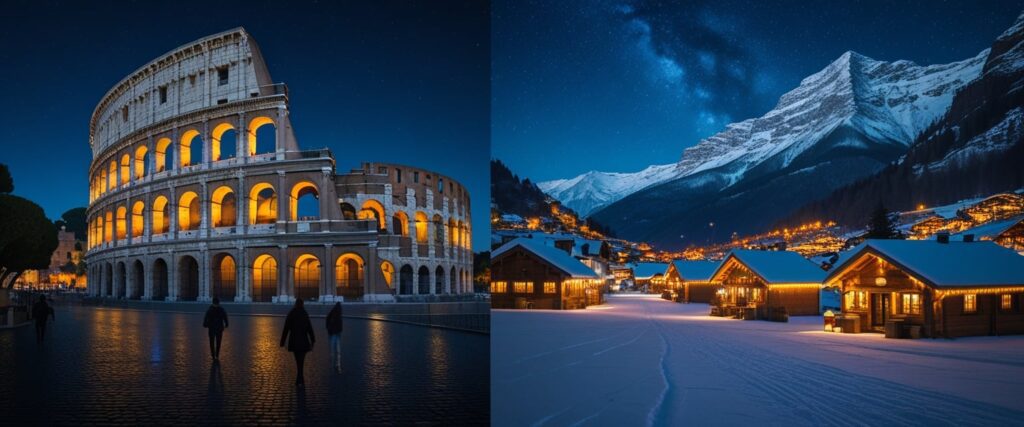
These experiences combine cultural heritage with natural beauty, showing how Europe embraces noctourism through both history and alpine landscapes.
Essential Tips for Experiencing Noctourism in 2025
Traveling after dark offers unique opportunities, but it also requires careful preparation. Visitors benefit most when they plan ahead, stay safe and comfortable, and make choices that respect both local communities and the environment.
Planning and Booking Nighttime Activities
Many noctourism experiences, such as stargazing tours, night safaris, or guided walks through illuminated landmarks, often require advance reservations. Popular events like cultural festivals or night markets can sell out quickly, especially during high travel seasons.
Travelers should check schedules for events like Kyoto’s temple light-ups or Dubai’s desert stargazing sessions. Booking early ensures access to limited-capacity tours and reduces the risk of missing rare activities such as aurora viewings in Iceland.
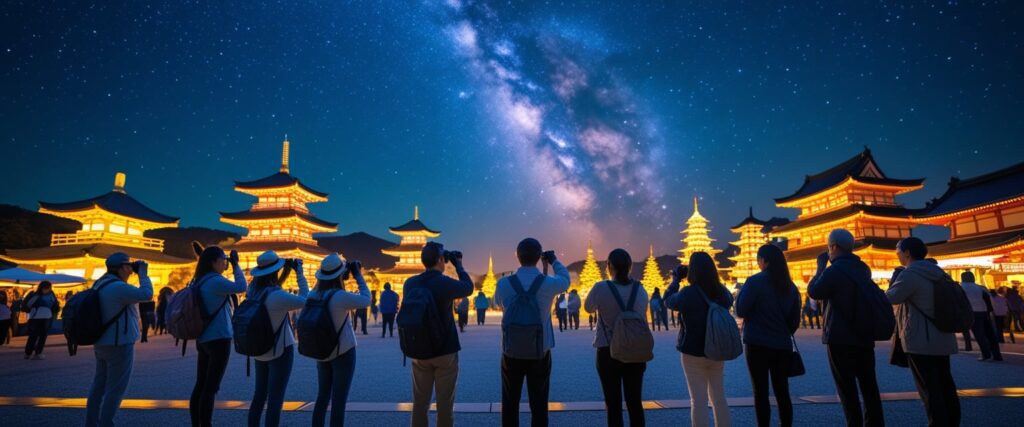
It helps to create a flexible itinerary. Nighttime conditions can change due to weather, especially for outdoor activities like observing meteor showers or exploring bioluminescent bays. A backup plan, such as visiting a local night market, keeps the trip enjoyable even if conditions shift.
Safety and Comfort for Night Travelers
Exploring at night requires a few extra preparations. Visitors should carry portable lights, wear comfortable shoes, and bring layers of clothing for cooler temperatures. Insect repellent and a small first-aid kit are also practical for outdoor activities like night safaris in Costa Rica or Borneo.
Choosing well-lit, popular areas helps reduce risk. Travelers should avoid isolated routes when possible and use licensed guides for activities in remote areas such as the Atacama Desert or Namibia’s stargazing sites.
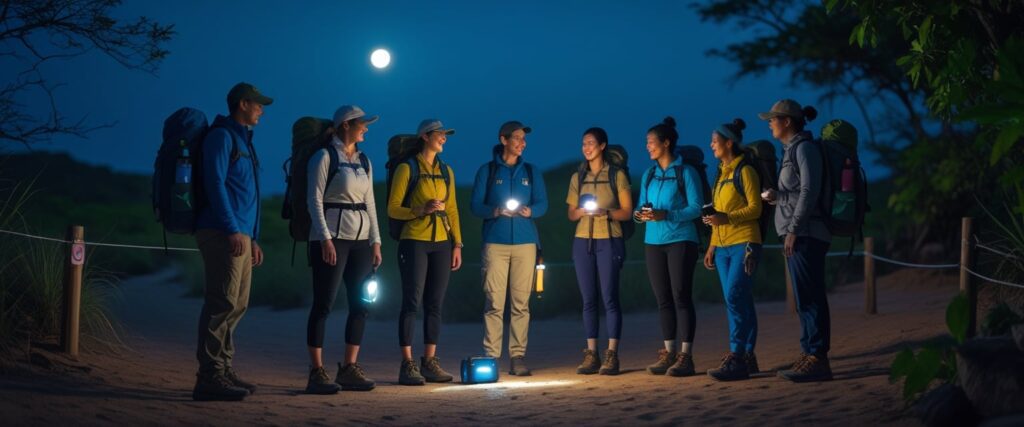
Practical tools like a portable charger keep phones ready for navigation or emergencies. Staying connected with group members through messaging apps or agreed meeting points also improves safety.
Sustainable Night Tourism Practices
Responsible noctourism reduces strain on destinations while preserving the natural environment. Visiting attractions at night spreads out tourist traffic, easing pressure on crowded daytime sites. This approach supports sustainable tourism by balancing visitor flow.
Travelers can minimize light pollution by choosing tours that follow dark sky guidelines. For example, stargazing groups in New Zealand often use red-filtered flashlights to protect night vision and avoid disturbing wildlife.
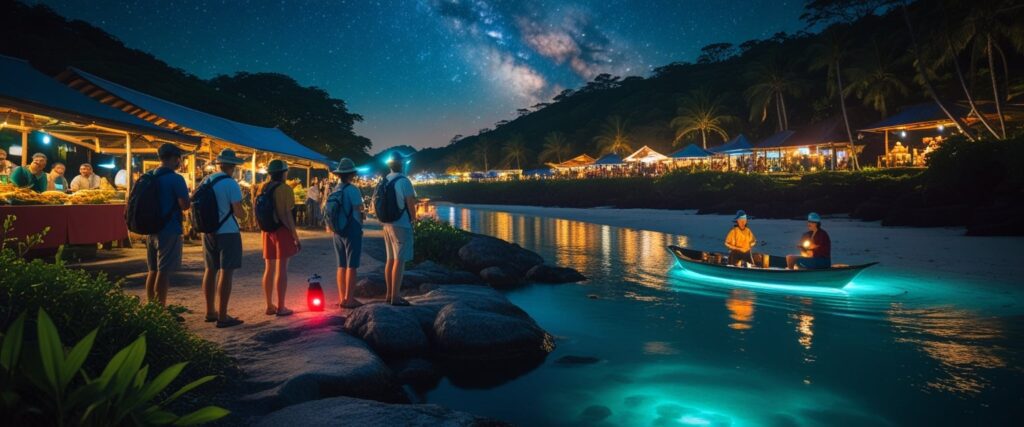
Supporting local businesses at night markets or cultural events strengthens community economies. Choosing eco-certified night safaris or low-impact cruises in bioluminescent bays also helps protect fragile ecosystems.
Small actions, such as respecting quiet hours and properly disposing of waste, ensure that noctourism remains both enjoyable and sustainable.
Conclusion
As travel trends evolve, exploring the world after sunset has become one of the most enriching ways to connect with nature, culture, and unique experiences. The guide to 10 Magical Noctourism Spots You Must Visit in 2025 highlights destinations that go far beyond daytime sightseeing, offering travelers adventures that only unfold under the stars. Whether it’s stargazing in the Atacama Desert, watching the northern lights in Iceland, or strolling through Kyoto’s illuminated temples, each location on the list of 10 Magical Noctourism Spots You Must Visit in 2025 delivers something unforgettable.
What makes these nighttime experiences so special is their ability to transform ordinary landscapes into extraordinary memories. From glowing bioluminescent bays in Puerto Rico to bustling night markets in Bangkok, the diversity of 10 Magical Noctourism Spots You Must Visit in 2025 proves that noctourism is not just a niche trend—it’s a global movement. For travelers who value fewer crowds, cooler temperatures, and rare opportunities, the 10 Magical Noctourism Spots You Must Visit in 2025 present a perfect mix of adventure and tranquility.
If you’re planning your travels, let the 10 Magical Noctourism Spots You Must Visit in 2025 inspire your journey. Each destination is a reminder that some of the world’s greatest wonders truly come alive only at night.
Frequently Asked Questions
Travelers in 2025 are focusing on destinations that highlight the night sky, unique wildlife, and cultural events that only happen after dark. Many locations also emphasize safety, accessibility, and photography opportunities for different types of visitors.
What are the top-rated destinations for night-time tourism in 2025?
Namibia’s NamibRand Nature Reserve attracts visitors with its certified dark skies and minimal light pollution, making it one of the most sought-after spots. Iceland also remains popular for aurora viewing, often combined with hot spring experiences. For cultural events, Hong Kong’s Tai Hang Fire Dragon Dance draws large crowds during the Mid-Autumn Festival.
Which nocturnal attractions offer the best stargazing experiences this year?
The Namib Desert in Namibia offers one of the clearest views of the Milky Way thanks to its distance from city lights. New Zealand also provides excellent stargazing, with observatories and guided tours available in regions like Lake Tekapo. Both destinations are recognized for their dark-sky certifications and professional astronomy programs.
Can you recommend any noctourism spots that are family-friendly?
Phillip Island in Australia is home to the nightly Penguin Parade, where families can watch little penguins return to their burrows under careful conservation management. In Costa Rica, guided nocturnal wildlife walks allow children to safely see frogs, insects, and other creatures in their natural environment. These activities combine education with entertainment for younger travelers.
Are there any hidden gems for night-time sightseeing that have emerged recently?
Piedmont in Italy now offers guided night truffle hunts, an activity that blends culinary travel with nocturnal exploration. Canberra’s Enlighten Festival in Australia has also gained attention for its light projections and night markets, offering a mix of art and culture after dark. Both destinations highlight experiences beyond the typical stargazing or aurora viewing.
What safety measures should visitors consider when exploring noctourism locations?
Travelers should carry reliable lighting, such as headlamps, and wear reflective clothing in areas with limited visibility. Guided tours are recommended in wilderness settings, especially safaris or jungle walks, to avoid dangerous encounters. Checking local weather conditions before stargazing or night hikes helps reduce risks tied to sudden changes in temperature or storms.
How do the newest noctourism spots cater to different photography enthusiasts?
Many lodges in Namibia and New Zealand now provide telescopes and photography workshops for astrophotographers. In Iceland, hotels with glass-ceiling rooms and on-site hot springs allow guests to capture the northern lights comfortably. Urban festivals like Hong Kong’s Fire Dragon Dance also give street photographers opportunities to document cultural traditions under dramatic lighting.
